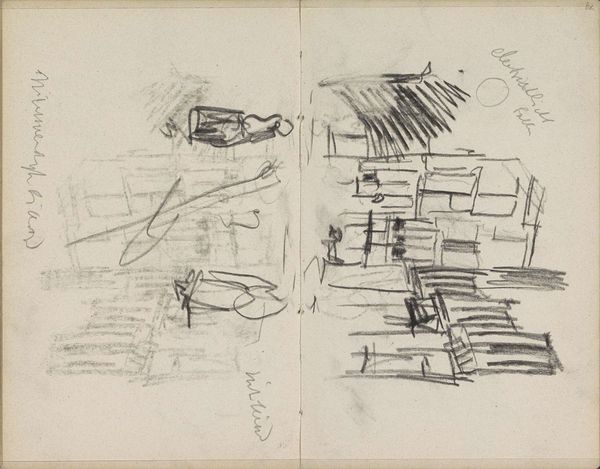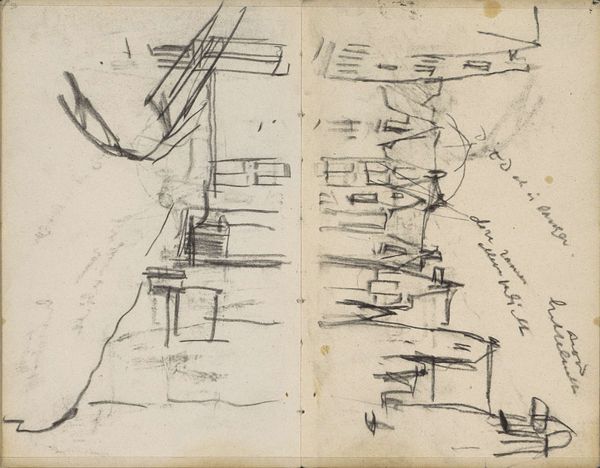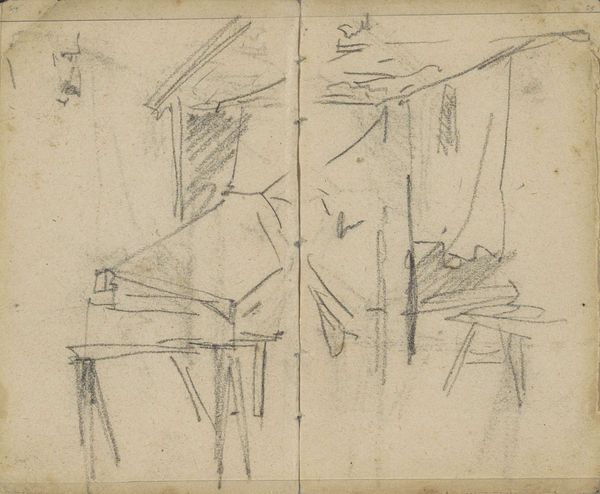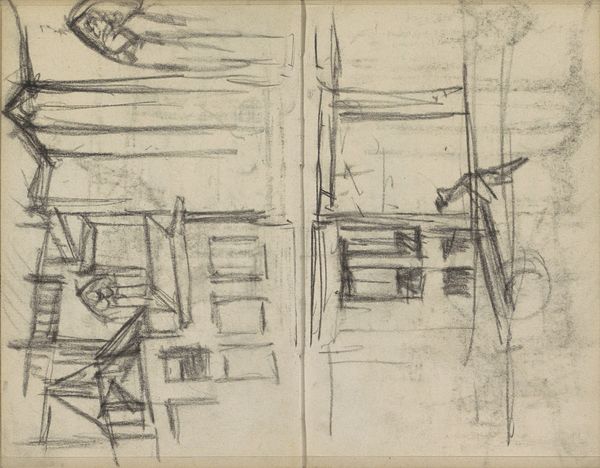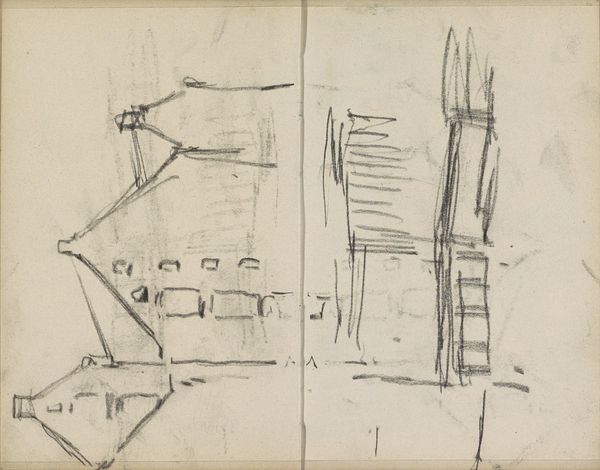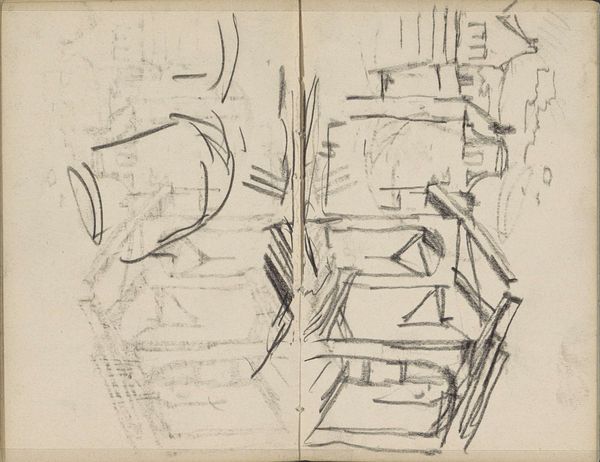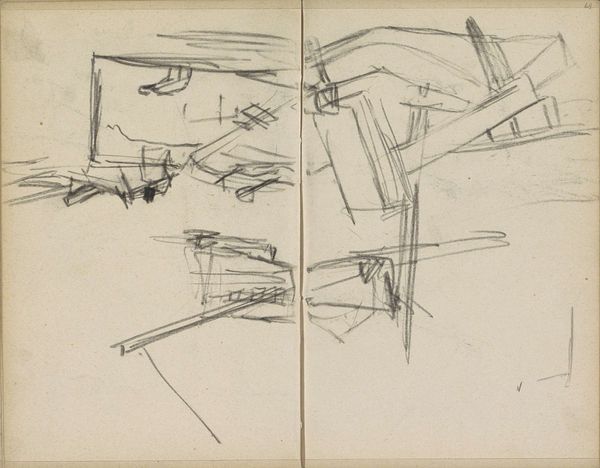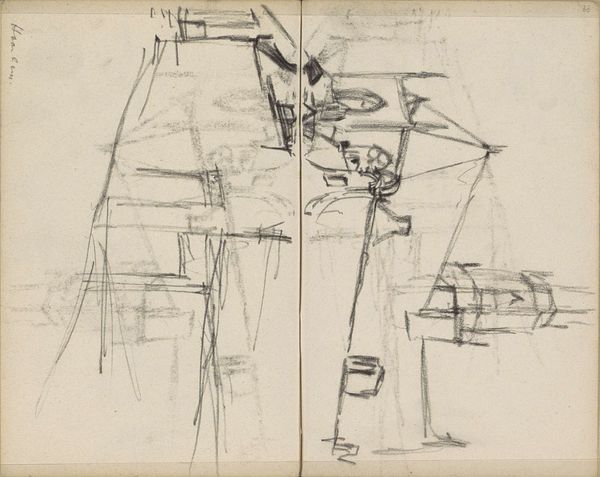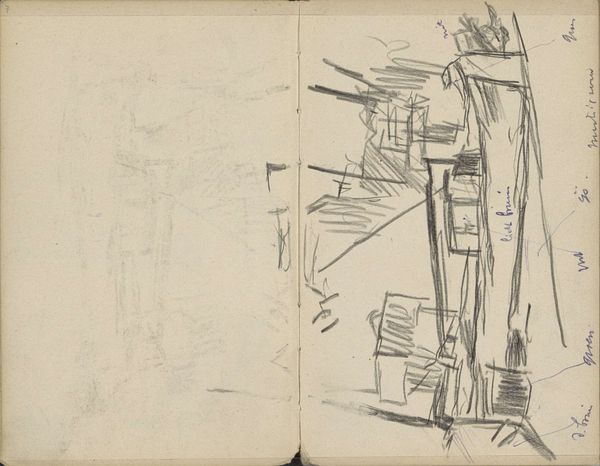
Stratenmakers aan het werk in de Overtoom te Amsterdam c. 1900 - 1923
0:00
0:00
georgehendrikbreitner
Rijksmuseum
Copyright: Rijks Museum: Open Domain
Curator: This pencil drawing, titled "Stratenmakers aan het werk in de Overtoom te Amsterdam," by George Hendrik Breitner, created sometime between 1900 and 1923, presents quite the study in contrasts. Editor: My initial impression is one of muted energy – a flurry of lines attempting to capture a transient moment. There's a feeling of the city in motion, but constrained. Curator: Yes, look at the density of lines on the left page compared to the relative openness on the right. Notice how Breitner uses hatching and varied pressure to define forms and suggest depth, all while maintaining an almost skeletal framework. Editor: The contrast highlights, for me, the harshness of labor and its imposition on the urban landscape. The fragmented representation could symbolize the alienation felt by these workers, building the city yet somehow detached from its prosperity. It almost feels like it could capture the essence of labor struggles and visibility. Curator: An intriguing thought. Structurally, the composition draws the eye around the page, with the central gutter acting almost as a fulcrum. One sees the relationship between objects is deliberately ambiguous. What elements did he chose to emphasize and what did he chose to hide, and what does that say about his focus as a whole? Editor: Perhaps he's choosing to focus on the activity itself rather than specific figures. We have a history of valorizing labor in art, but Breitner offers us something more ambiguous. He draws our attention to labor as the backbone of urbanity, maybe highlighting its significance as invisible toil. Curator: Considering that, one must consider what visual language underscores such representation and visibility through absence. In effect, we become implicated as observers within the historical context, looking into a city in a specific period. Editor: Absolutely, this work makes us consider those relationships. How are labor, urbanization, and art intertwined, and whose stories are told, or more pertinently, left untold in this process.
Comments
No comments
Be the first to comment and join the conversation on the ultimate creative platform.


